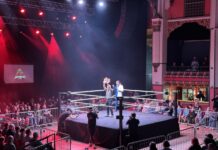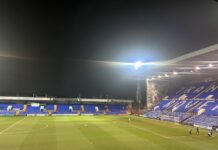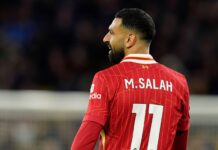Farhad Moshiri’s arrival at Everton was met with a cautious optimism by the Goodison faithful.
The Iranian-born tycoon, who had previously been part of the ownership structure at Arsenal, became the majority shareholder of the Toffees in February 2016.
In the season before the takeover was completed, Everton had finished 11th, the club’s lowest league finish in over a decade. However, prior to that, they had consistently finished either in or close to the European places.
His involvement at the Blues now seems to be coming to an end, with the sale of his now-94% share to the Friedkin group, after eight controversial years. But what do the numbers say about the Monaco-based businessman’s tenure?
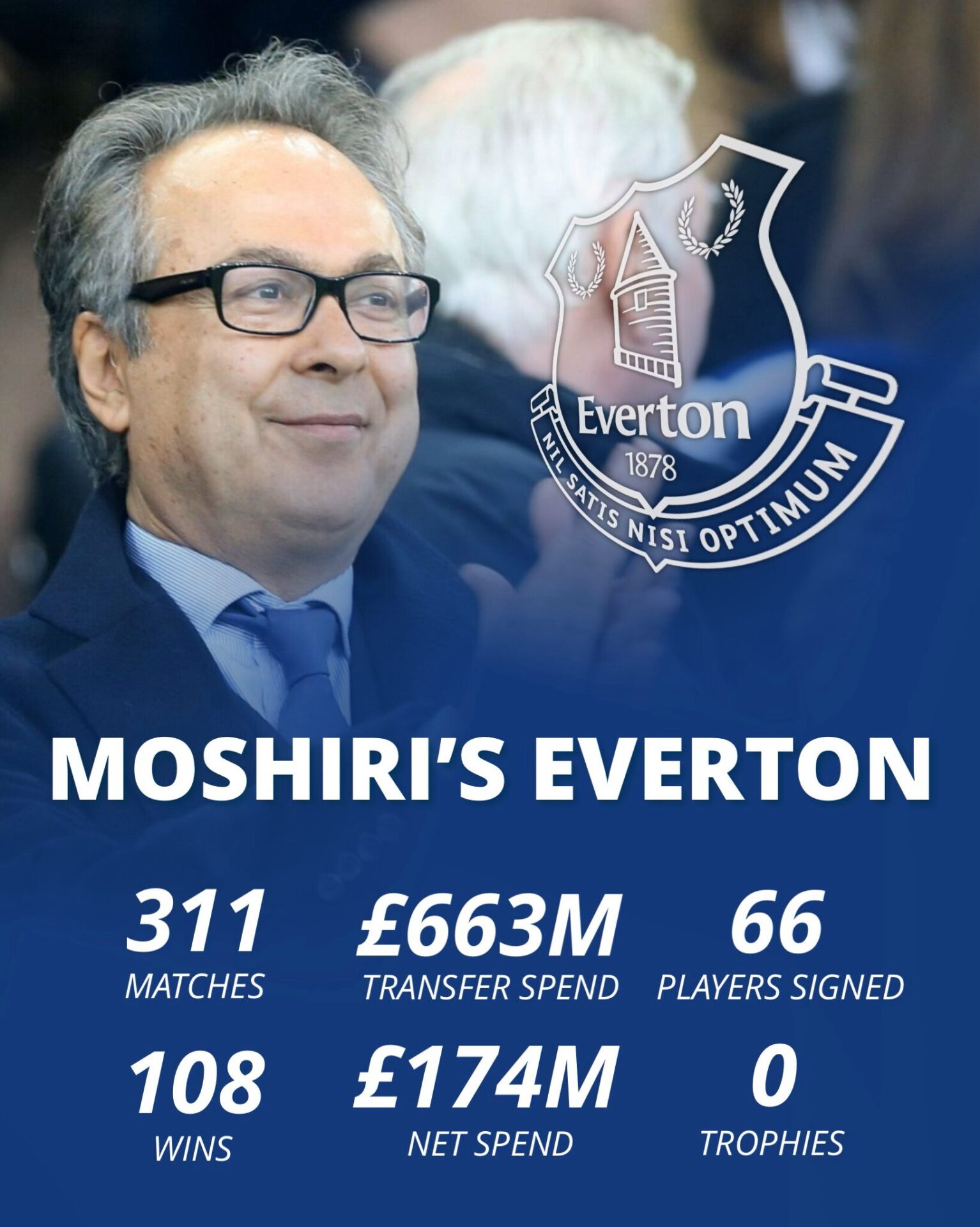
The Moshiri era has seen Everton’s long wait for a trophy go on. Given the glory of previous generations which will still be in the memories of some supporters, this is bound to be a source of discontent among fans.
Despite making the semi-finals in both the EFL and FA Cups in the takeover season, the Toffees again finished 11th, leading to the sacking of manager Roberto Martinez. They have not made a semi-final since.
In the league, Everton qualified for the Europa League with a seventh-placed finish in the following season, 2016-17, under Ronald Koeman, but this has also been the only time the team has achieved this since the club changed hands.
As is clear from the financial numbers, this has not been through a lack of trying. Moshiri’s £663 million transfer spend, coupled with a £174 million net spend, represent two mouth-watering figures. But how does it compare to their Premier League rivals?
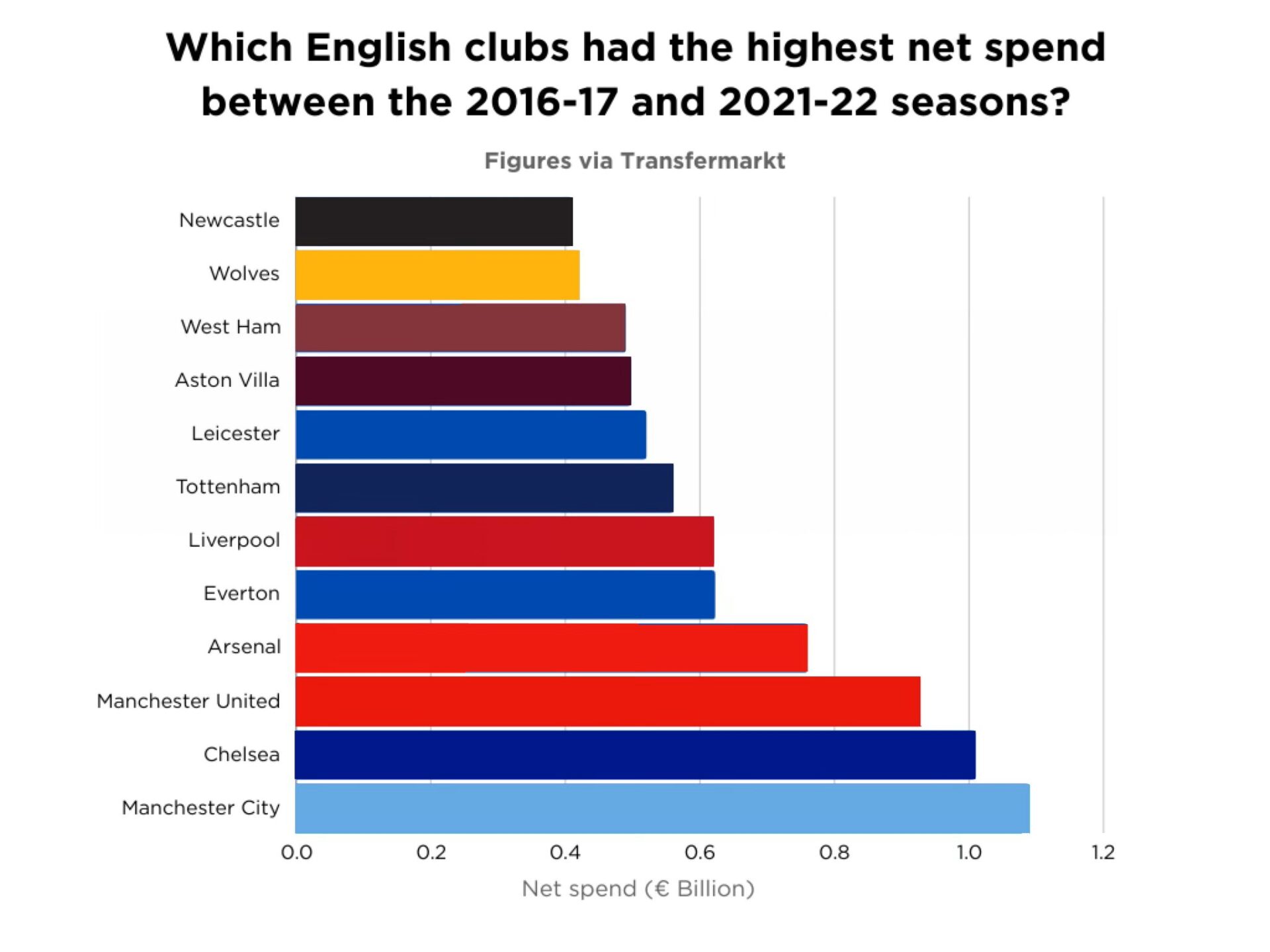
These figures account for spend up to the end of the 2021-22 season, when Moshiri first put the club up for sale amid worries surrounding finances. There is no question that in the Iranian’s first six years, he threw as much as he could at his quest for success.
Perhaps most strikingly, Everton’s net spend was more than that of their neighbours Liverpool during this period. It is worth noting that between 2016 and 2022, the Anfield side made three Champions League finals, winning one, as well as being crowned Premier League champions in 2020.
It is a quintessential example that spending does not equal success – 66 players have come through the door at Goodison Park under the present ownership – the most expensive of whom make up an interesting list.

Of the 12 most expensive purchases of the Moshiri era, three were sold at a profit – Moise Kean, Richarlison and Amadou Onana. Jordan Pickford and Michael Keane are the only two who presently play for the club.
Record signing Gylfi Sigurdsson spent five years on Merseyside, making over 150 appearances. Whilst the Icelandic midfielder impressed in patches after his arrival from Swansea City, it is difficult to justify his hefty price tag when reviewing his impact for the Toffees.
For the majority of the names on that list, it is up for serious debate whether or not their signing was a success. England number-one Jordan Pickford’s value is difficult to deny, while Onana and Richarlison both impressed enough to earn Champions League moves, the latter remaining a huge favourite among Blues fans.
Even for trusty contributors Keane and Iwobi, the price tags read as being on the high side. It is possible that Everton’s frivolous approach to spending under Moshiri led to targets having their values inflated by their clubs, whilst their wage expenditure was also exceptionally high during this period.

Despite the managerial appointments of Marco Silva, Carlo Ancelotti, Frank Lampard and Sean Dyche, no one has come as close to breaching the league’s evident ‘big six’ as Koeman did in 2017.
However, accumulating the last eight years, Everton have been as consistent as anyone in challenging them. It could however be argued that this is to be expected, given that their level of spending has, at times, exceeded that of the division’s heavyweights.
Since 2021, things have turned exceptionally sour. Amid repeated relegation battles, Blue fans have been loud and clear in their demands for Moshiri to depart. At long last, their wish is now seemingly set to be granted.
Crucially, incoming owner Dan Friedkin can be under no illusion that it is not about how much you spend, but how you spend it. The success of frugal operators such as Brighton and Crystal Palace across this period help emphasise this point.
It is, of course, also impossible to ignore the club’s imminent relocation to a new state-of-the-art on the docks of the city, largely financially supported by Moshiri and his associates. This is likely to be viewed as the only lasting positive from the club’s recent history.
Friedkin arrives with eyes firmly on the pitch, as fans long for a break from a turbulent period of points deductions and cost-cutting. The numbers represent the past – it now feels that a new future for the club is around the corner.


